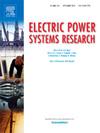电动汽车参与的微电网集群分布式多时间尺度能量管理策略
IF 4.2
3区 工程技术
Q2 ENGINEERING, ELECTRICAL & ELECTRONIC
引用次数: 0
摘要
多个微网互联形成微网集群,实现能源互补,提高可再生能源利用率。提出了一种孤岛微电网集群分布式多时间尺度能量管理策略,通过长、短时间尺度的协调,提高调度计划的准确性和可行性。在长时间尺度低碳经济调度阶段,建立了基于激励的电动汽车集群的车网交互模型,构建了基于模型预测控制(MPC)的微电网集群低碳经济调度模型。采用同步交替方向乘法器(SADMM)和有限时间一致性算法以全分布式方式求解调度模型。在短时间尺度的反馈修正阶段,依次调整可控发电机组的输出计划,使可控发电机组的可调能力承受的压力最小。仿真结果表明,该策略有效地实现了孤岛微网集群的低碳经济调度和可靠运行。此外,通过优化电动汽车集群的充放电行为,维持了微网集群内部的功率平衡,同时降低了总体运行成本23.656%。本文章由计算机程序翻译,如有差异,请以英文原文为准。
Distributed multiple time scales energy management strategy for microgrid cluster with electric vehicles participation
A microgrid cluster is formed by interconnecting multiple microgrids, which can achieve energy complementarity and improve the utilization rate of renewable energy sources. This paper proposes a distributed multiple time scales energy management strategy for islanded microgrid cluster, which enhances the accuracy and feasibility of scheduling plans by coordinating long and short time scales. In the low-carbon economic scheduling phase at long time scale, a vehicle-to-grid (V2G) interaction model is established for incentive-based electric vehicle (EV) clusters, and a low-carbon economic scheduling model for the microgrid cluster is constructed based on model predictive control (MPC). The scheduling model is solved in a fully distributed manner using the synchronous alternating direction method of multipliers (SADMM) and a finite-time consensus algorithm. In the feedback correction phase at short time scale, the output schedule of controllable generation units is sequentially adjusted to minimize the pressure on the adjustable capacity of controllable generation units. The simulation results indicate that the proposed strategy effectively achieves low-carbon economic scheduling and reliable operation of the islanded microgrid cluster. Additionally, by optimizing the charging and discharging behaviors of EV clusters, power balance within the microgrid cluster is maintained while reducing the overall operation cost by 23.656%.
求助全文
通过发布文献求助,成功后即可免费获取论文全文。
去求助
来源期刊

Electric Power Systems Research
工程技术-工程:电子与电气
CiteScore
7.50
自引率
17.90%
发文量
963
审稿时长
3.8 months
期刊介绍:
Electric Power Systems Research is an international medium for the publication of original papers concerned with the generation, transmission, distribution and utilization of electrical energy. The journal aims at presenting important results of work in this field, whether in the form of applied research, development of new procedures or components, orginal application of existing knowledge or new designapproaches. The scope of Electric Power Systems Research is broad, encompassing all aspects of electric power systems. The following list of topics is not intended to be exhaustive, but rather to indicate topics that fall within the journal purview.
• Generation techniques ranging from advances in conventional electromechanical methods, through nuclear power generation, to renewable energy generation.
• Transmission, spanning the broad area from UHV (ac and dc) to network operation and protection, line routing and design.
• Substation work: equipment design, protection and control systems.
• Distribution techniques, equipment development, and smart grids.
• The utilization area from energy efficiency to distributed load levelling techniques.
• Systems studies including control techniques, planning, optimization methods, stability, security assessment and insulation coordination.
 求助内容:
求助内容: 应助结果提醒方式:
应助结果提醒方式:


